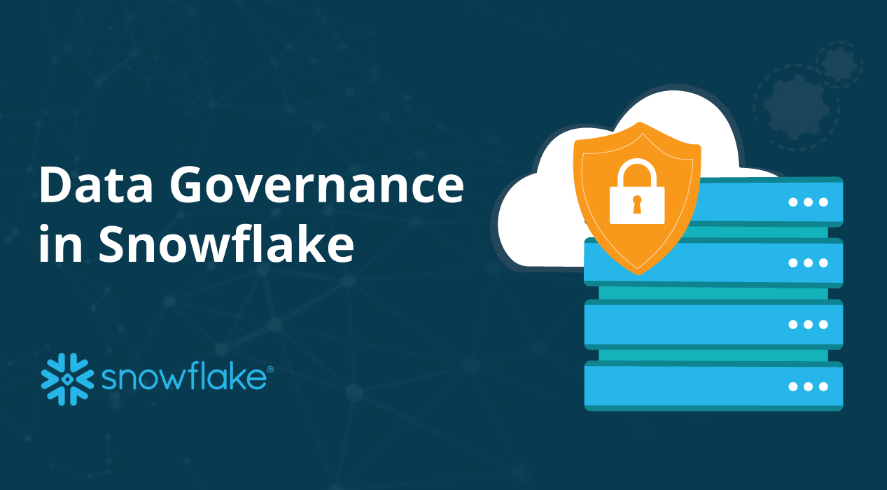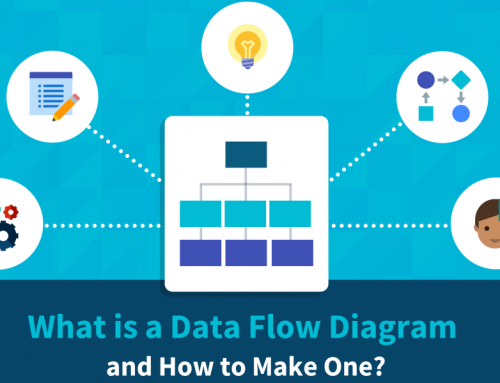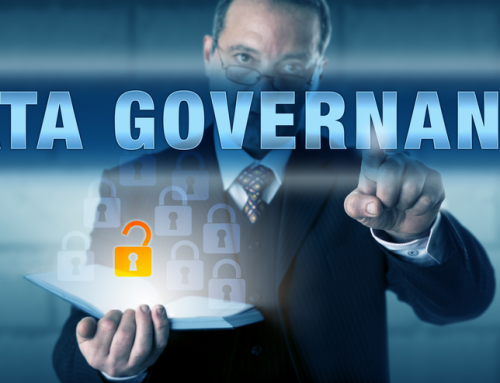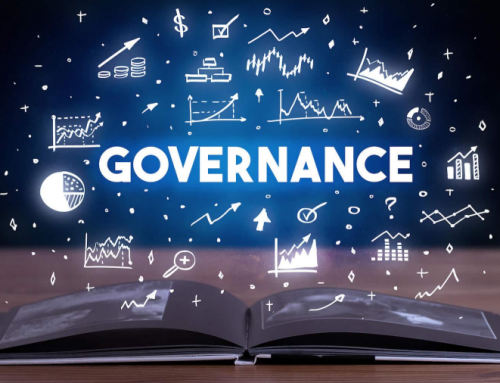Snowflake Data Governance
With the rise of SaaS applications and the migration of data processing to the cloud, countless data arrives at an ever-increasing rate, requiring real-time business decisions. Whether your organization decides to migrate its data from its legacy data silos, or to load endless raw data from disparate sources, you’ve probably already considered using a cloud data warehouse such as Snowflake to address these two common data integration use cases.

Snowflake Data Governance
However, data from so many different sources can become difficult to track. Ensuring the accuracy and appropriateness of data sources is an organization’s top priority, and most importantly, meeting all users’ expectations of self-service. This is where data governance is most influential.
Data governance involves data protection and control and enabling people throughout the organization to share, process and socialize the meaningful information extracted from this data. It protects the integrity, quality, and credibility of data shared across the organization. The benefits can be magnified when well-designed data governance strategies are applied to cloud-based data warehouses.
Snowflake as a Modern Data Warehouse
As a cloud data warehouse, Snowflake provides the performance, concurrency, and simplicity needed to store and analyze all of an organization’s data in one location. Snowflake provides a data repository for ingesting structured data for reporting and data analysis. Its ability to accept large amounts of unrefined data from a large number of sources in a variety of formats also makes IT an attractive data lake solution for many IT decision makers. Because of its ability to separate its storage from its computing resources, you can dynamically increase the storage capacity of the data lake without considering the compute nodes, and flexibly adjust the size of the compute cluster to meet demand only when needed.
Beyond the Warehouse and into the Lake
Data lakes can serve as an alternative to storing disparate and sometimes limited data sets in scattered, disparate data silos. It should provide a single integrated system for easily storing and accessing large amounts of data, while providing complete and direct access to raw (unfiltered) organizational data, which is where business intelligence professionals and many other users throughout the organization should have access to the data.
The data lake constructed based on modern data warehouse should have the following advantages:
- Raw data can be loaded, analyzed, and queried immediately without prior parsing or transformation.
- Structured and semi-structured data flows without manual coding or any manual intervention.
- Manage native SQL and read-time schema queries on structured and semi-structured data.
- Cost-effectively store large amounts of raw data while deploying only as much computing power as needed.
The Importance of Data Governance
For any data-driven organization looking to get the most out of data for analytics and business intelligence, data governance should be a top priority and using a cloud data warehouse like Snowflake is the right approach. As a result, those IT leaders who are eager to embrace the challenges of digital transformation, without planning a proper data governance strategy, may make the mistake of diving headfirst into their already established data lakes, only to find themselves re-emerging in a data swamp.
Consequences of not Having Data Governance and Data Quality
With countless data flooding into data lakes at an ever faster rate, business decisions need to be made in real time. Without appropriate measures, data quality of any kind is almost impossible to scale. Ideally, the data sets that go into the data lake should enrich it, but unfortunately, sometimes they pollute it.
As a result, IT teams can take weeks to publish new data sources that can be ingested in seconds. Worse yet, customers will end up creating their own version of the “truth” by adding their own rules on top of the newly created data source when data consumers don’t realize new data is already available. Ultimately, too much time is spent or wasted in preparing and securing data instead of analyzing the information and providing valuable business insights.
Top-down and Bottom-up
Typically, data governance is applied through a top-down approach when building an enterprise data warehouse. First, a central data model must be defined, which requires the expertise of a data professional, such as a data steward, data scientist, data manager, data protection officer, or data engineer, to reconstruct the data multiple times for semantic purposes before it is extracted for analysis.
After ingestion, the data catalog will reconcile lineage and accessibility. While this approach is effective in managing data centrally, this traditional approach to data governance cannot scale to the digital age: too few people have access to the data.
Yet another approach is to design data governance for the data lake through a bottom-up approach. Compared with the cemtralized model, this more agile model has several advantages. For example, it is scalable across data sources, use cases, and audiences, and does not require a specific file structure to ingest data. Using cloud infrastructure and big data, this approach can greatly accelerate the data ingestion process of raw data.
Data lakes typically begin with a data lab approach where only the most data-savvy can have access to the raw data. It will then need other governance layers to connect the data to the business context before other users can use it. A data governance strategy like this ensures that the data lake consistently offers a trusted single source of facts for all users.
Balance Collaborative Data Governance Processes
As more and more people from different parts of the organization bring in more and more incoming data sources, the ideal governed data lake will have the right data governance strategy; establish a more collaborative approach to governance up front. This allows the most knowledgeable business users to become content providers and curators. For this approach, working with the data as a team from the outset is critical. Otherwise, you may be overwhelmed by the amount of work required to verify the reliability of the data pouring in the data lake.
Delivering Data You Can Trust
So, we now understand why data governance is so important in the initial phase of cloud data migration, and why implementing a collaborative data governance strategy is the only way forward. Now, let’s explore the recommended steps for applying it to a data lake on Snowflake.
Step 1: Discover and Clean
Use modern pattern recognition, data profiling, and data quality tools to capture and determine what is needed to ensure data set quality. If you apply data as soon as it enters the environment, you can understand what’s in the data and make it more meaningful. Your discovery and cleanup phase should include the following tools and capabilities:
- Automated profiling through data cataloging. Systematize the process by automatically applying it to each core dataset. Automatically profile data, create and categorize metadata to facilitate data discovery.
- Self-service data preparation. Possibly allowing anyone to access the dataset and then clean, normalize, transform or enrich the data.
- Data quality operations start with the data source and data life cycle to ensure that trusted data is ultimately available to any data operator or user or application.
- Pervasiveness through self-service. Deliver capabilities across all platforms and applications and deliver them to everyone from developers to business analysts.
Step 2: Organize and Empower
The advantage of centralizing trusted data into a shareable environment is that, once actionable, it saves the organization time and resources. This can be done in the following ways:
- Organize a data catalog and create a single source of trusted and protected data that will offer control over recorded data and its lineage. This information should include where the data came from, who had access to it, and what the relationships between the various data sets were. Data lineage will give you an overview of tracking the flow of data from the data source to the final destination, as well as compliance to privacy regulations such as GDPR or CCPA.
- Empower people to manage, remediate and protect data. Back-office capabilities are supported to designate data stewards to maintain data and make finding and using data easy and attractive. Leave the preparation to those who can accurately identify it, and sensitive data to those who should look at it.
- Involve peers in improving data. Using collaborative data management capabilities such as data stewardship, you can create coordinated workflows and management activities that involve everyone in data quality.
Step 3: Automate and Enable
After all discovered and cleaned data is centrally organized and key stakeholders have been involoved in collaboratively managing the data to keep it trusted and compliant, it is time to implement the automation phase. Automating data processing is essential not only to maintain scalable workflows, but also to eliminate repetitive, tedious and counterproductive manual tasks.
- Use machine learning to learn from remediation and deduplication to suggest the next best action to apply to the data pipeline, or to take implicit knowledge from users and run it on a large scale through automation.
- Use or encrypt automatic protection. Selectively share data within your organization for development, analysis, and so on without disclosing personally identifiable information to people who are not authorized to see it.
- Enable everyone. Build a platform for everyone, leveraging user-friendly applications for a community of stakeholders.
- Use API services to pull valuable datasets from your data lake back to your line-of-business applications. Pipeline your data to applications that benefit from the trusted data created by your data governance efforts and feed valuable intelligence back into your line-of-business applications.
Inevitably, as more organizations roll out their digital transformation strategies, and as they move to cloud data integration, they will take a huge interest in data governance. As we mentioned, Snowflake provides a modern cloud data warehouse solution where a data lake can be built to accommodate anything from big data migrations to big data projects, regardless of format or origin. This is a huge advantage considering you can load and access all your data from a single source of truth.
That said, there is no guarantee that the information provided in a data lake is reliable unless a robust data governance strategy is in place. Data governance can only be truly achieved through proper discovery and cleansing, stewardship, quality, and self-service.
Conclusion
Thank you for reading our article and we hope it can help you to have a better understanding of snowflake data governance. If you want to learn more about snowflake data governance, we would like to advise you to visit Gudu SQLFlow for more information.
As one of the best data lineage tools available on the market today, Gudu SQLFlow can not only analyze SQL script files, obtain data lineage, and perform visual display, but also allow users to provide data lineage in CSV format and perform visual display. (Published by Ryan on Jun 21, 2022)
If you enjoy reading this, then, please explore our other articles below:



